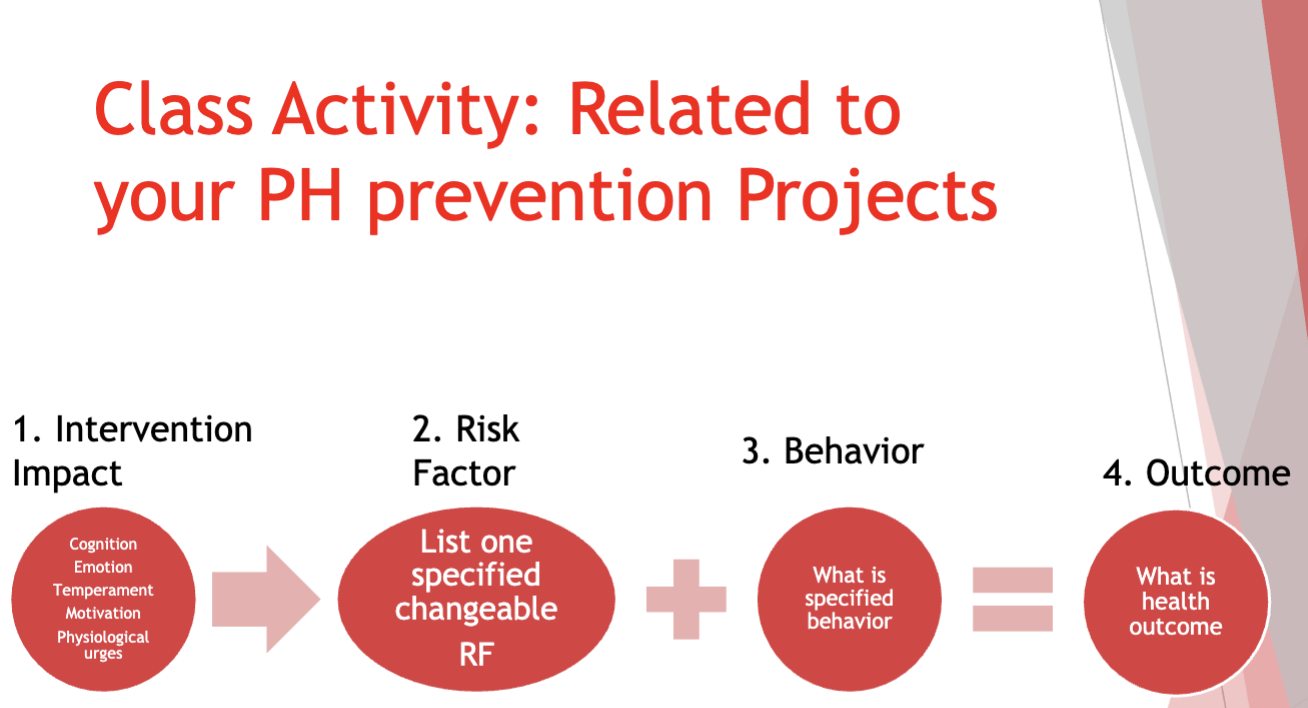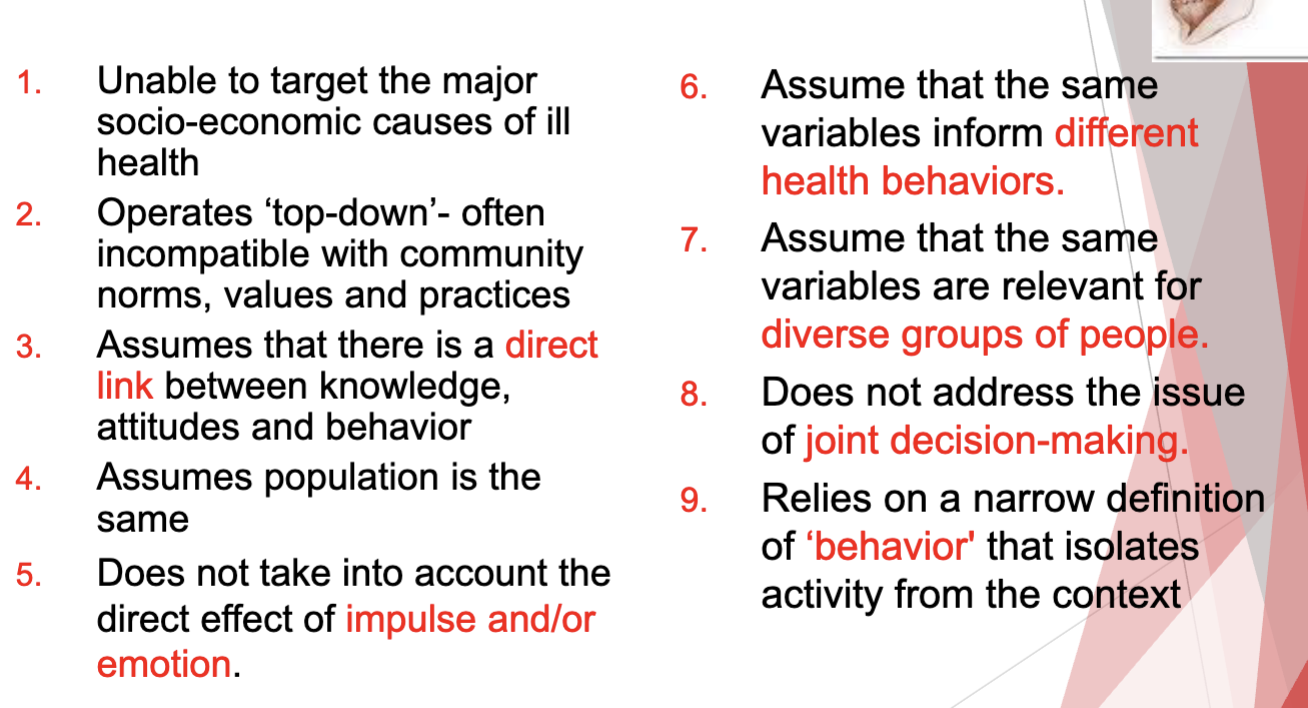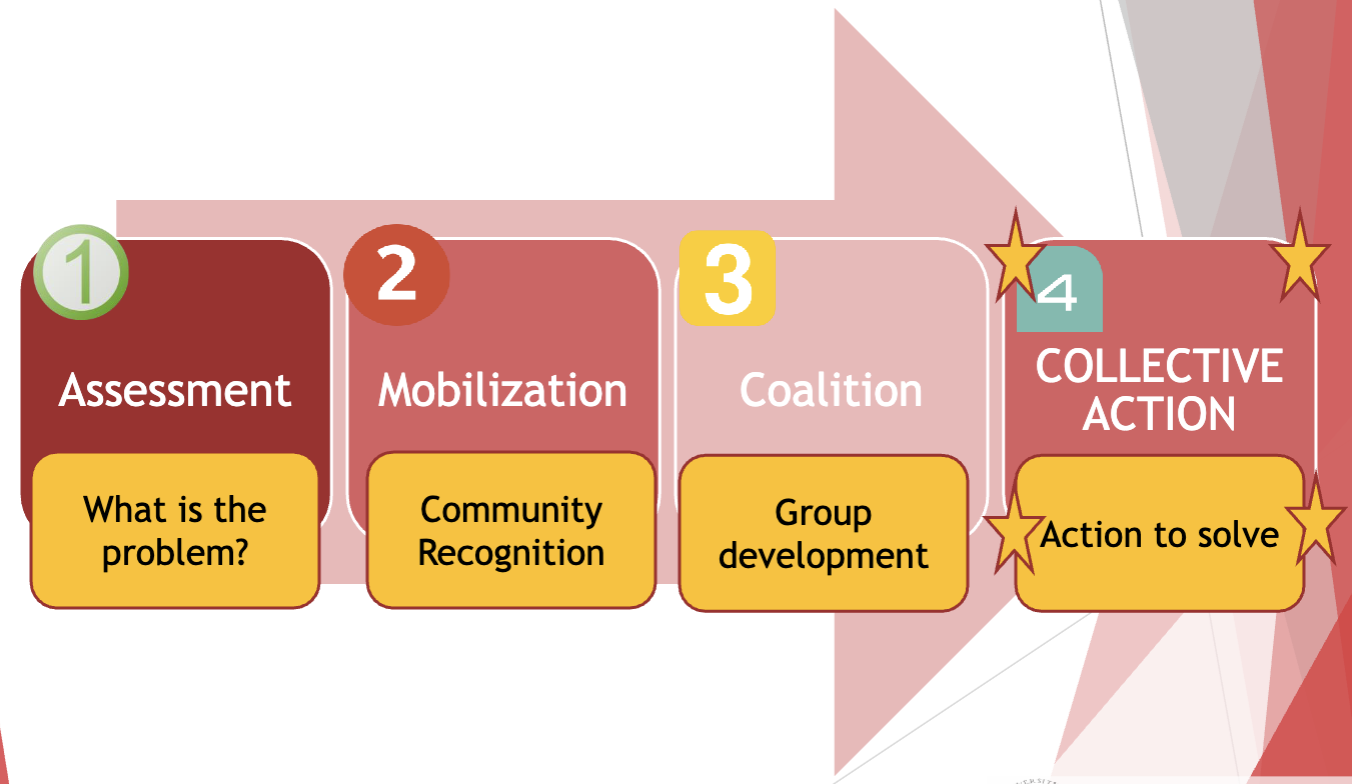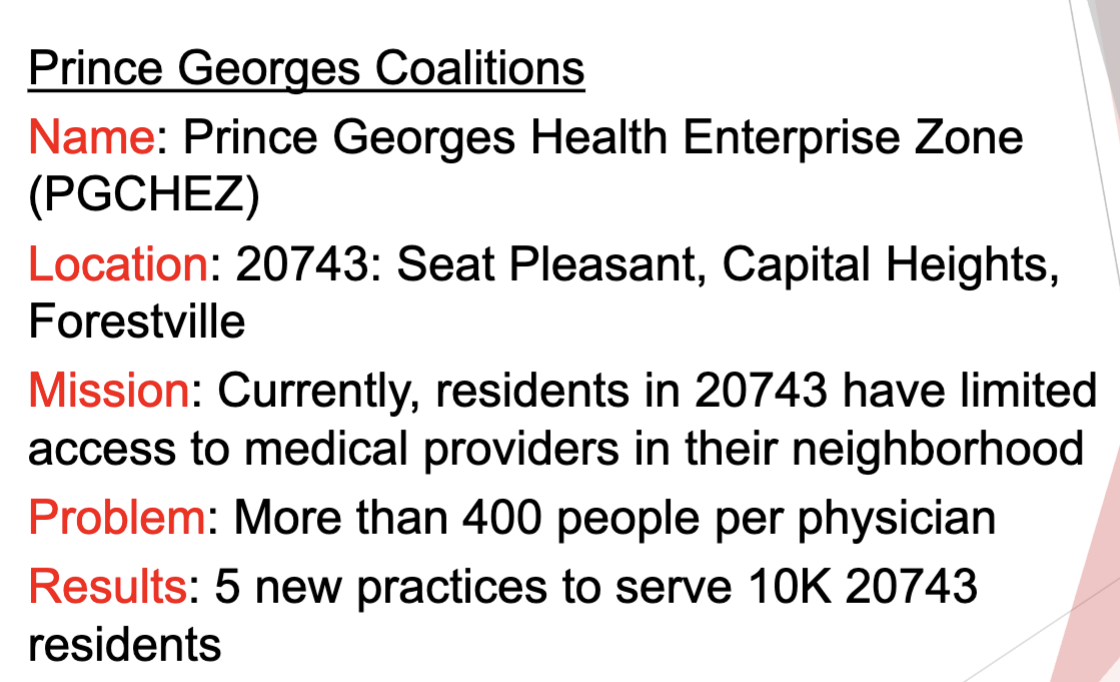week 7 - primary prevention
1/3
There's no tags or description
Looks like no tags are added yet.
Name | Mastery | Learn | Test | Matching | Spaced |
|---|
No study sessions yet.
4 Terms
primary levels
primary:
behavior change will be the same - this is focused on hoe high or low risk the population is.
contains HEALTH PROMOTION ( the science and art of helping people change their lifestyle to move towards a state of optimal health)
The goal of primary prevention is to alter risk factors
prior to the onset of disease, thus preventing the
disease from beginning or greatly diminishing the
severity of subsequent disease
ideology of health promotion and the approaches
the real and only challenge for health experts and
educators is to find effective ways of
helping people to maximize their health
Health promotion is concerned with strategies for promoting health. It assumes:
1. Good health is a universally shared objective;
2. There is agreement on what being healthy means;
3. There is a scientific consensus about which behaviors facilitate good health.
Health promotion through goals, means, and criteria
Pursue different goals,
Utilize different means to achieve their goals,
Propose different criteria for their evaluation.
BUT→ They all aim to promote good health and to prevent, or reduce the effects of, ill health
3 major approaches
Behavior change approach,
Objective: to bring about changes in
individual behavior through changes in
individuals’ cognitions.Process: provision of information
related to health risks and hazards.Aims: to increase individual’s
knowledge about the causes of health
and illness.Assumption: humans are rational
decision-makers whose cognitions
inform their actions.

→ examples of behavior change models: SEM and theory of planned behavior
CRITICISMS of the “Behavior Change”

Self-empowerment approach (not necessarily top-down, audience takes active involvement)
Objective: to empower individuals to make healthy choices
Process: participatory learning techniques
Aims: to increase control over your physical, social and internal environments
Assumption: power is a universal resource that can be mobilized by every individual
→ EMPOWERMENT: to enhance the possibilities for people to control their own lives”
Empowerment implies that many skills are
already present or at least possible.Empowerment implies that poor functioning
is a result of social structure and lack of
resources
uses “THERAPY MODEL” of health promotion (ex: group work, problem solving, client-centered counseling, assertiveness training, social skill training, education drama)
relies upon the individual persons inherent capacity to act rationally
Collective action’ or community development approach
Objective: to improve health by addressing socio- economic and environmental causes of ill health.
Process: individuals organize and act collectively in order
to change their physical and social environments.Aims: to modify social, economic and physical structures
that generate ill health.Assumption: communities of individuals share interests
that allows them to act collectively
→ how is collective action different from self-empowerment?
collective action: self empowerment aimed toward for the COMMUNITY

we want to know the community - therefore:
needs assessment:
Formal approach to identifying health
needs and health problems in the
communityThe essential ingredient is community
engagement and collaborative
participation
community mobilization (THIS IS WHAT RESULTS IN EMPOWERMENT):
7 steps to community mobilization:

community -based coalitions: UNIQUE CHARACTERISTICS
MAXIMIZE the power of individuals and groups
MINIMIZE the duplication of effort and services
- Coalitions help mobilize and influence
- Provide avenue for recruitment
- Allow for exploitation of resources
→ examples:
collective action: community gains critical conscious and recognizes social and economic limits and health influences + (social capital) for supportive community with networks and organizations

-